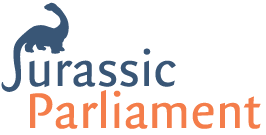What are rights of ordinary members at nonprofit board meetings?

You may also have a governmental source, a university center, or a nonprofit organization that gives information on this subject. In Washington State, we are fortunate to have Wayfind, a cornucopia of valuable legal resources (access the website here) and 501 Commons, another treasure trove for nonprofits (website here), as well as several additional organizations.
Robert’s Rules on rights of ordinary members
The basic position according to Robert’s Rules of Order Newly Revised, 12th edition, the only authorized text of Robert’s Rules, is that ordinary members do not have the right to attend board meetings, nor do they have the right to see the minutes of board meetings. Of course, if your state laws give members rights, that supersedes Robert’s Rules.
We recommend these rights of ordinary members for your bylaws
The Robert’s Rules position is too restrictive for most of our modern organizations. In the interest of transparency, bylaws often allow ordinary members to observe board meetings, and to review meeting minutes once they have been approved by the board. If there is a long interval between meetings, some organizations make a summary of board actions available to the members soon after the meeting. It is also common to establish a time period at board meetings for member input—a “Member Forum.”
We recommend that nonprofit organizations with members include these points in their bylaws:
- Ordinary members may observe board meetings.
- Ordinary members may review regular meeting minutes once approved (though not the minutes of executive session—closed—meetings).
- Ordinary members may speak at board meetings during the Member Forum.
We also believe that it is critical for boards of nonprofit organizations to be responsive to their members, and to appear to be responsive! You may wish to conduct member surveys, to have “coffee with the board” sessions, to solicit member feedback with a form on your website, and so on.
Rights of ordinary members at the board meeting
At the meeting itself, you will want to welcome ordinary members warmly and thank them for observing the meeting, while also making clear that they will not have the opportunity to speak during board discussion, but only during the Member Forum. This is a balancing act! The body language and attitude of the leader and board members play a significant role in conveying this dual message. Printing the guidelines for the members and guests is helpful.
Be sure to seat ordinary members and guests on the periphery of the room, not at the board table. If an invited speaker comes to the table to make a presentation, they should return to the periphery after completing their remarks.
Should the board decide that it wants to hear from an ordinary member during the meeting, it can do so at any time by majority vote or unanimous consent (read about this method of voting here). However, we recommend being careful not to establish a precedent that may be difficult to maintain in future.
Ordinary members must observe courtesy and respect
Ordinary members are subject to the same restrictions that apply to board members regarding the content of their remarks. They may not make personal, insulting or vulgar remarks, use obscenity, and so on. Read about inappropriate remarks here. Don’t allow demonstrations—clapping, hissing, booing, stamping feet—at board meetings. These inhibit free speech on the part of the board members, and everyone else present.
Ordinary members do not have the right to videotape the board meeting. You may wish to require that they refrain from posting on social media during the meeting. There was a case where an ordinary member was tweeting about the board discussion and mischaracterizing what people were saying. Contact us if you would like a sample policy on this.
Ordinary members may not disrupt the meeting
Ordinary members do not have the right to disrupt the board meeting. Robert’s Rules says that “all persons present at a meeting have an obligation to obey the legitimate orders of the presiding officer” (p. 645). If an ordinary member becomes rowdy or obstreperous, the chair should respond in a firm and confident manner, saying “The member is requested to stop this behavior at once.” The chair may require the difficult member to leave the room. If the member refuses, you may call security, or you may take a recess and adjourn to another location.
Remember that the First Amendment does not apply to private nonprofit organizations. You have the right and the duty to arrange matters so that your board can carry out its business efficiently and peacefully. We hope that disruption won’t occur, but if odd things happen, having a contingency plan in place will serve your organization well.
Have you encountered difficulties with your ordinary members at board meetings? Share your story!


We had one brand new president that actually invited the entire membership of 100 people to come to the board meetings and said they could talk about whatever they wanted. It took us a few weeks to convince him that that was not what BOARD meetings are about. He was always claiming that as president he could do all sorts of things. This began our search into parliamentary procedure. Thank you all for being out there to help groups under the tyrant chair .
Wow, what a story! I’m glad you convinced him. Thanks for writing!
Does a member have the right to ask the secretary to record the number of negative votes on an important motion?
This is a great question. Here are a few thoughts to consider.
1) For local governmental bodies, sometimes state law requires that the number of votes, and who voted which way, be recorded in the minutes.
2) If there is no law or regulation about this, the matter is at the discretion of the body itself.
3) Do your bylaws say anything about how votes should be recorded?
4) If not, it is perfectly appropriate for you as a member to request that the exact count be recorded in the minutes. Say, “I request that the vote count be included in the minutes.”
5) Usually the chair would authorize this by unanimous consent (read our post here).
6) If someone objects, you should make a motion and the chair should call the vote on it. Say, “I move that the number of votes for and against this motion be included in the minutes.” This motion would take a majority vote (more than half) in favor to pass.
Does this help? We have several more posts in the “Voting and Quorum” category of this blog about voting and recording votes. Thanks for writing.